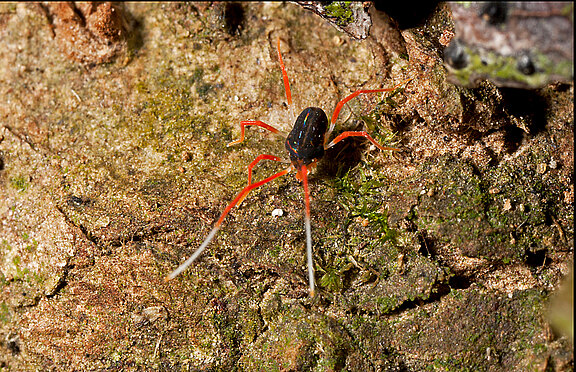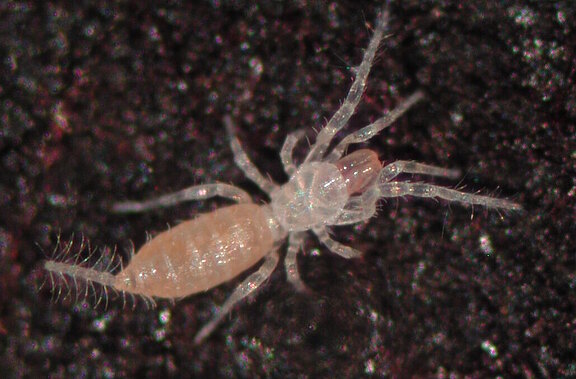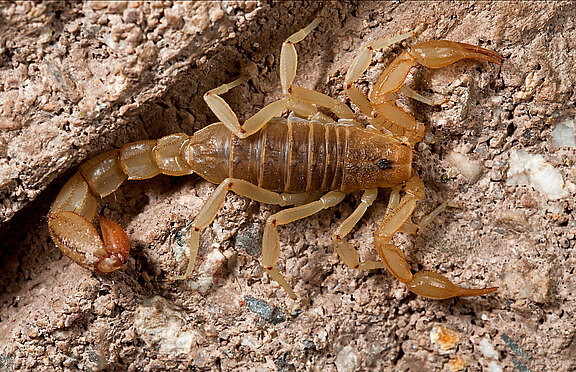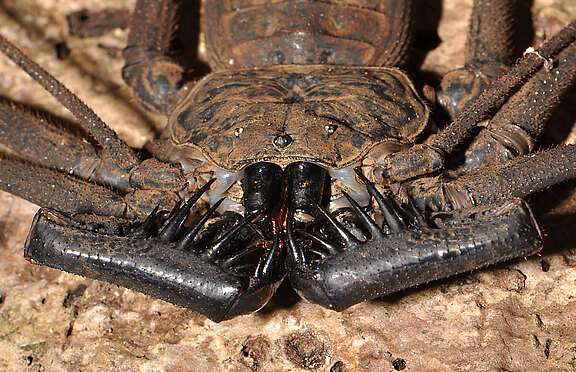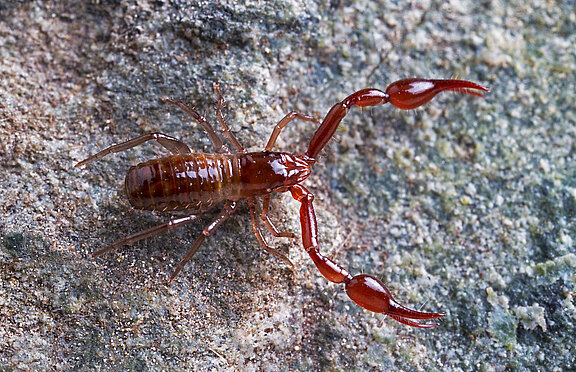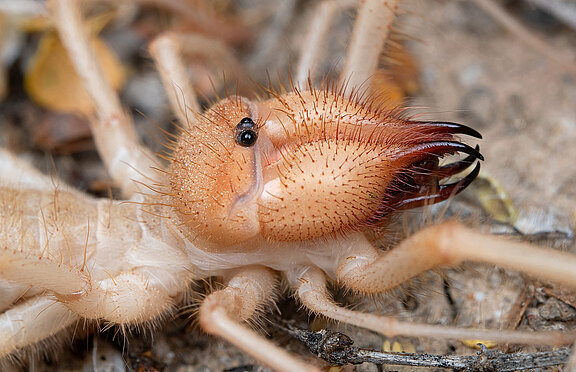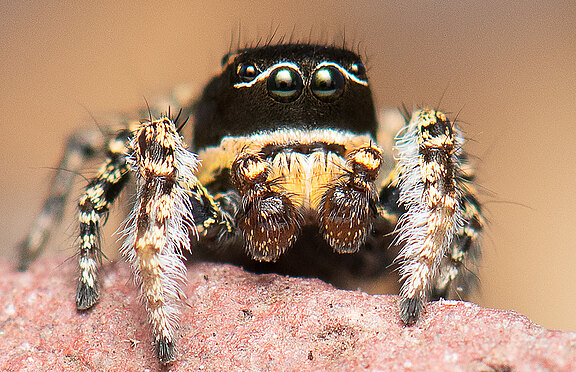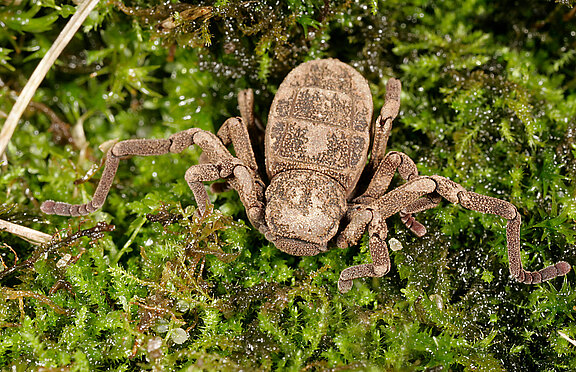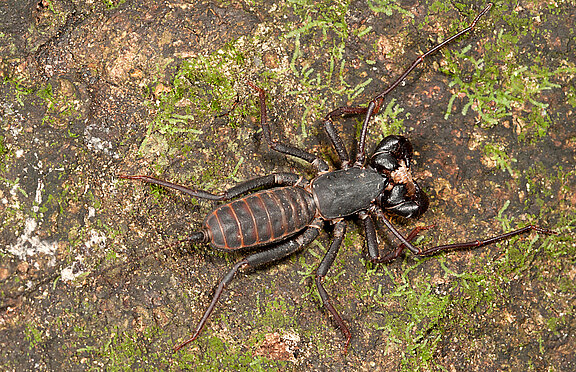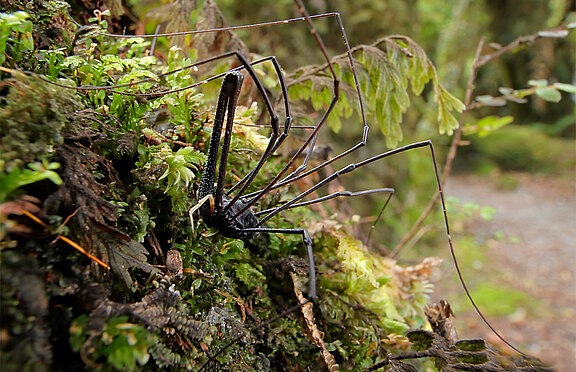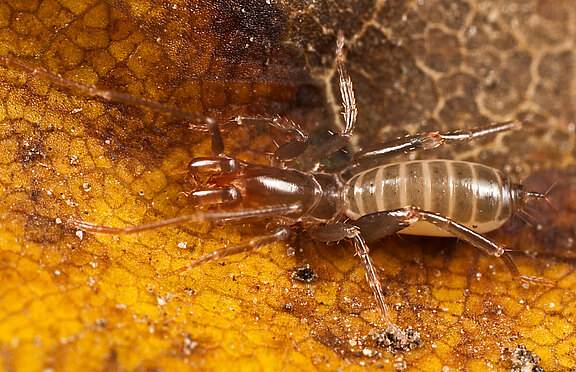List of all articles
Volume 49 Number 1
Prey, natural enemies, predation, cannibalism, autotomy
Abstract
The Neopilionidae is a highly diversified harvestman family in New Zealand, comprising eight genera and 28 species. Although individuals of many species are abundant in the field, basic information on their natural history is absent. Here we describe the diet, predators, and defensive behaviors of 13 species across three genera, Forsteropsalis Taylor, 2013, Mangatangi Taylor, 2013, and Pantopsalis Simon, 1879. Using three years of field observations, we first identify food items for this family, finding that New Zealand neopilionids are opportunistic, generalist foragers with a diet composed of a wide variety of prey and scavenged soft-bodied invertebrates, including worms, amphipods, species from nine orders of insects, and two orders of arachnids (including conspecifics). We then describe the first known invertebrate predators of New Zealand harvestmen, including seven spider species, and conduct a review of the literature to collate a list of 32 species of native and non-native vertebrates (frogs, lizards, fish, birds, and mammals) that prey on harvestmen, including neopilionids. Finally, we describe the defensive behaviors of neopilionids, providing the first reports of autotomy and thanatosis in the family. In general, the diet of New Zealand neopilionids is similar to other harvestman species, and the list of predators includes mostly insectivorous taxa known to feed on harvestmen elsewhere. The defensive repertoire of neopilionids includes behaviors recorded for other species of Eupnoi, such as leg autotomy, but also unique behaviors that are only known for species of Dyspnoi and Laniatores, such as thanatosis.
Volume 49 Number 1
Cribellate silk, hunger, collective behavior
Abstract
Spider webs are characteristic of a species, yet web architecture, the amount of silk laid, and silk mechanics are plastic at an individual level. These different web parameters are influenced by the spiders’ own intrinsic state as well as biotic and abiotic conditions. When compared to satiated spiders, hungry spiders are known to build bigger webs, alter the mesh width of the web or increase the frequency of web-building. Although the influence of hunger on web architecture is known in solitary spiders, it has not been studied in social spiders. Here, we examine how prey availability affects the amount of web and cribellate silk laid in the social spider Stegodyphus sarasinorum, Karsch, 1892 (Eresidae). In a laboratory setup, we observed that unfed spiders invest more in web-building, compared to fed spiders. Unfed social spider colonies laid more silk, particularly cribellate silk, than fed colonies. Our results help to shed light on the plasticity of web architecture in social spiders with respect to changes in prey availability.
Volume 49 Number 1
Cocoon web, Polysphincta genus group, koinobiont ectoparasitoid, Neotropical.
Abstract
In this study, we report a new interaction of the wasp Zatypota riverai Gauld, 1991 (Ichneumonidae) parasitizing the spider Cyclosa fililineata Hingston, 1932 (Araneidae) and we describe the modified spider web. Our results show that parasitized spiders build modified webs that are clearly different from normal capture webs. This modified web presents several additional lines at the center of the web, forming a disk-like structure that was also observed in modified webs of other host orb-weaving spiders. To our knowledge, Z. riverai (this study) and Z. kauros Gauld, 1984 are the only two species of the genus Zatypota that use spiders from different families as host. However, the unexpected host C. fililineata could be an accidental host, since in the same region there are two of the typical hosts, the theridiid spiders Anelosimus baeza Agnarsson, 2006 and Theridion sp.
Volume 49 Number 1
Male egg-guarding, mate guarding, reproduction, Honduras, Cusuco
Abstract
We report observations over several field seasons of egg and juvenile guarding by males of a Central American species of cosmetid harvestman (Opiliones: Cosmetidae), Cynorta bromeliacia Goodnight & Goodnight, 1947. This represents only the second species of the family Cosmetidae that has been reported to exhibit paternal care. Importantly, we observed multiple instances of solitary male egg-guarding, including examples where eggs and young were at different stages of development. We also observed a few cases of mate guarding by a male at an oviposition site, where the female was near to eggs that appeared to have been recently laid. We discuss these observations in relation to the arboreal tendency of this species and speculate that oviposition sites are close to roosting sites or other such refuges for either the male or both sexes. Given the weak sexual dimorphism displayed by the species, we discuss that the externally visible characters we used to identify males are unlikely to provide any advantage in fighting off conspecific males. We also suspect that females may produce multiple clutches in this species, but this remains to be verified. Finally, we discuss how our findings at the end of the wet season may relate to the local microclimate and suggest further standardized observations throughout the year are required.

